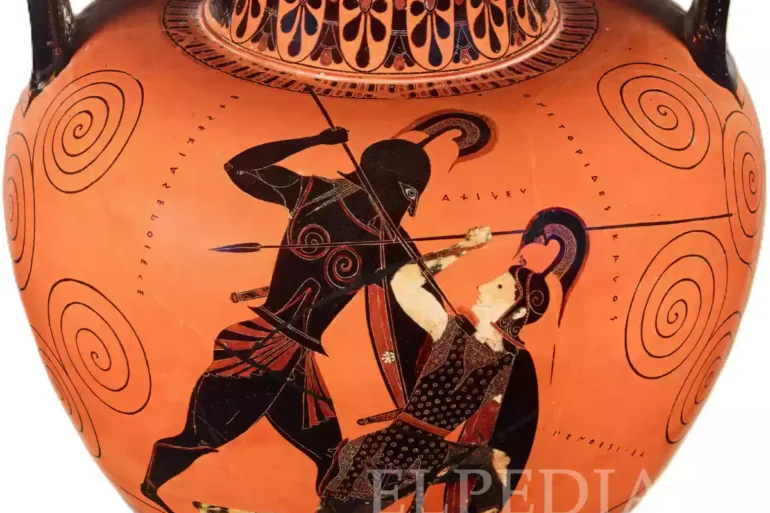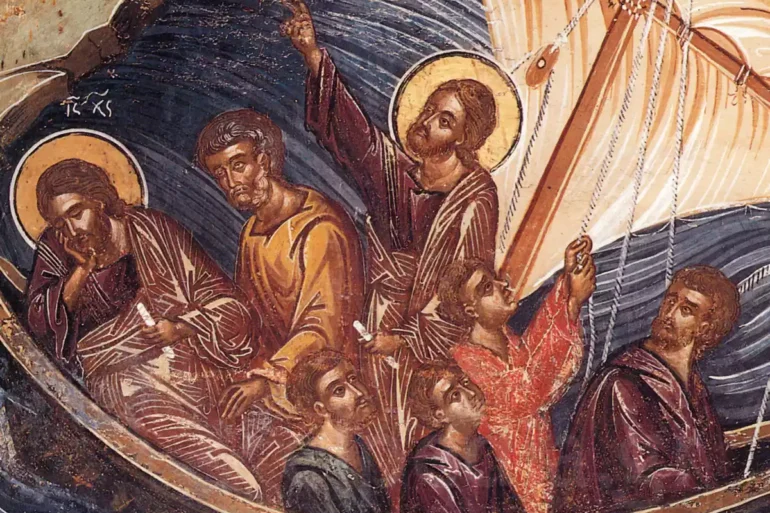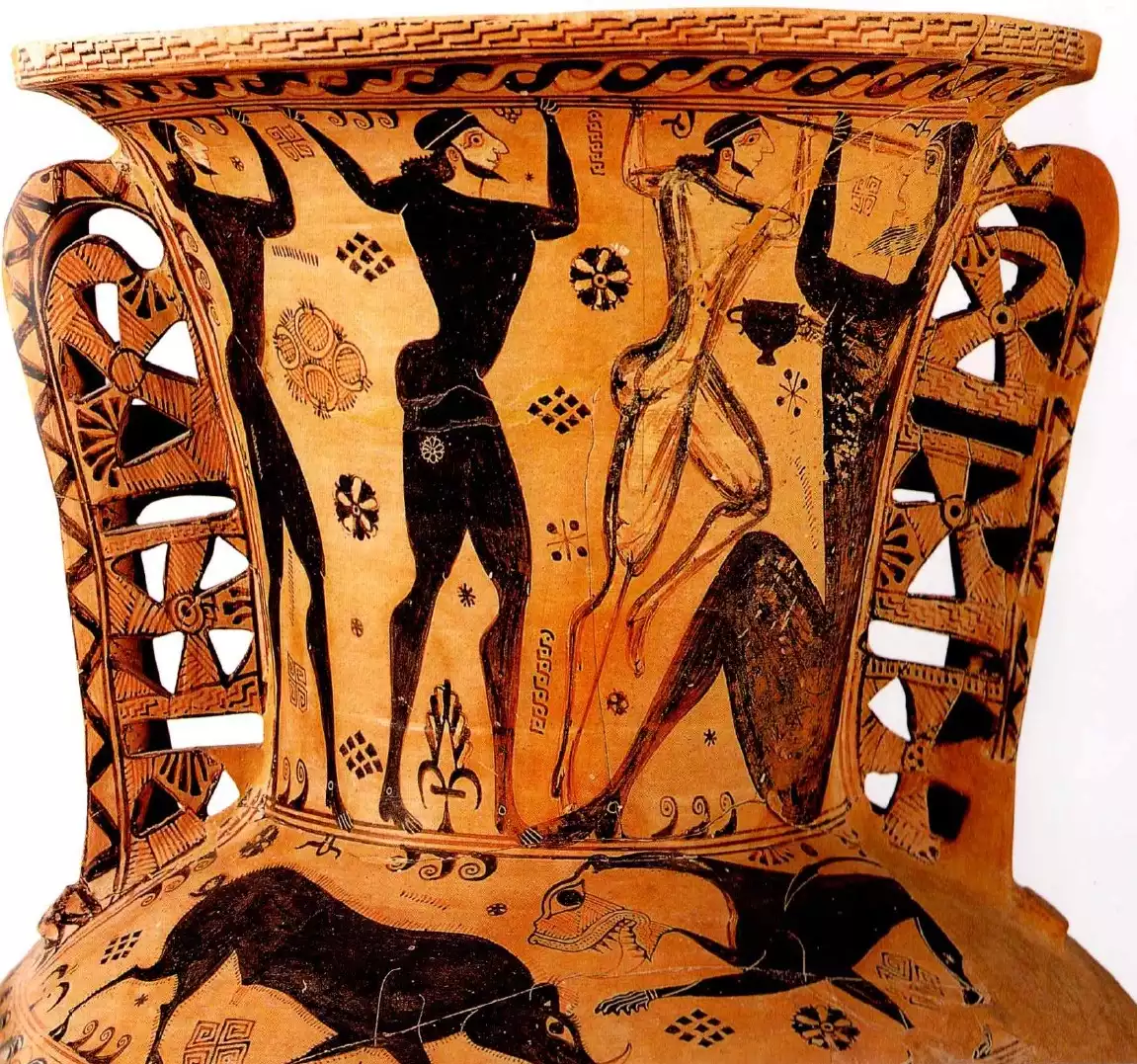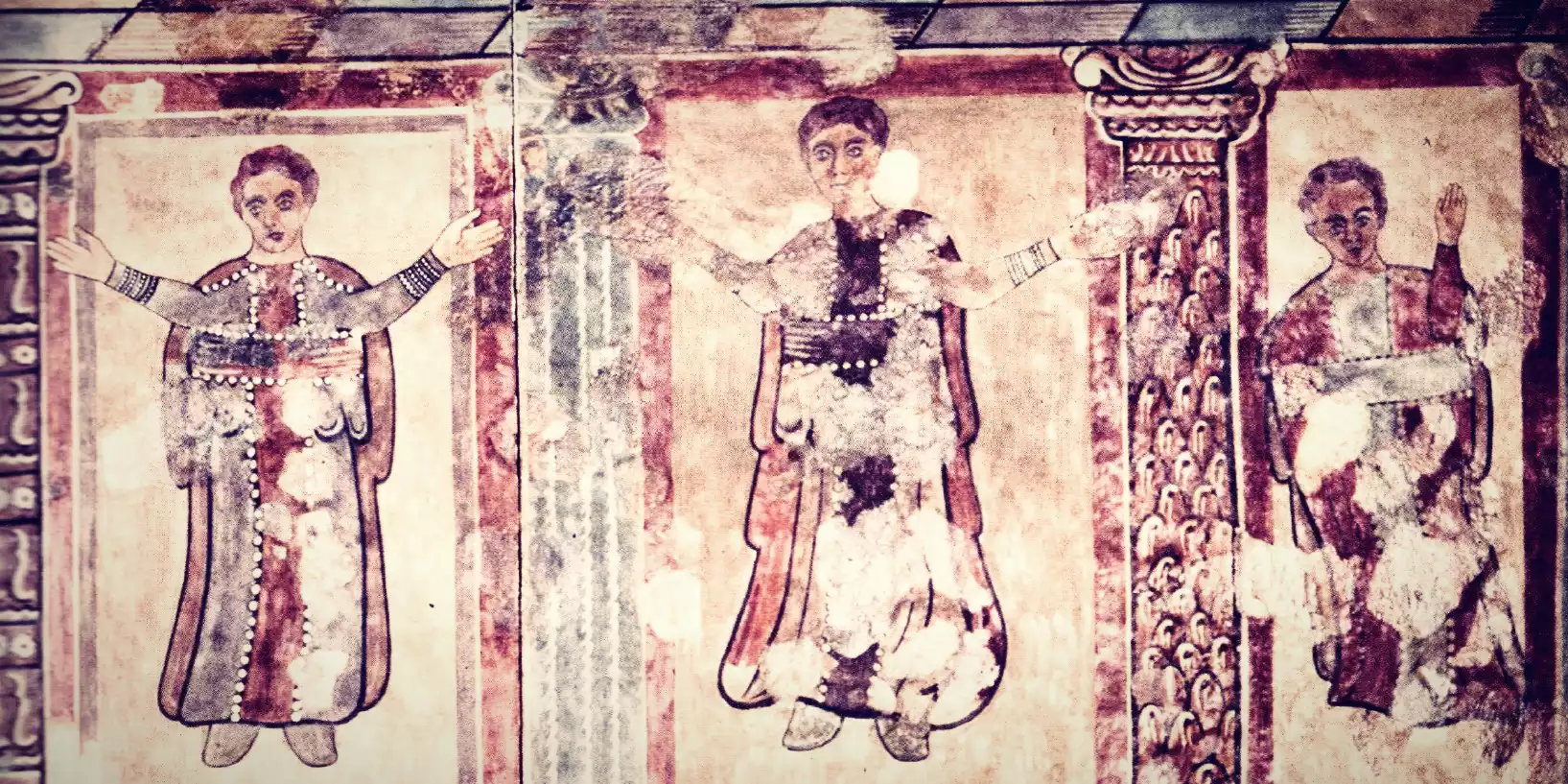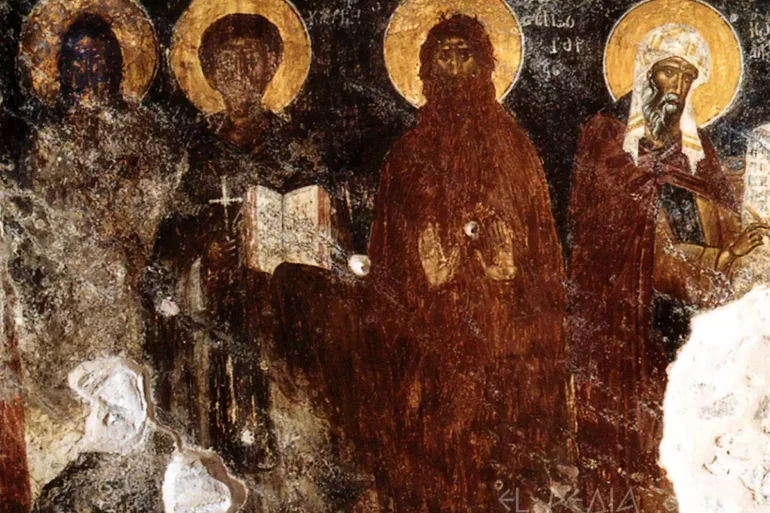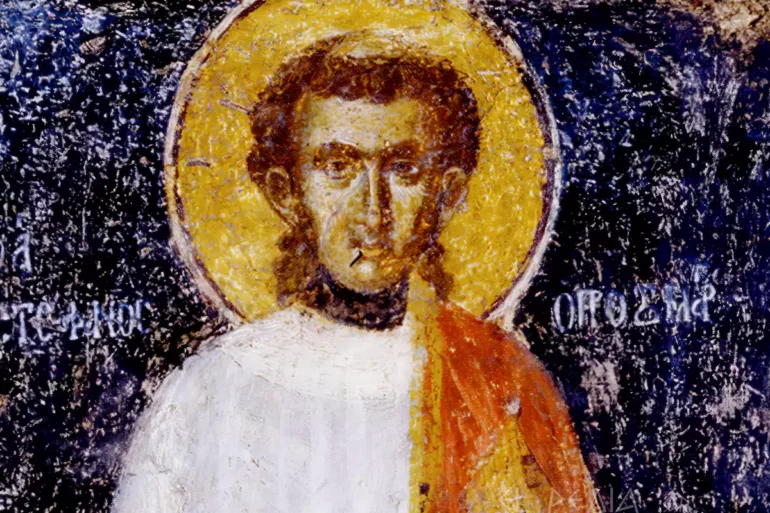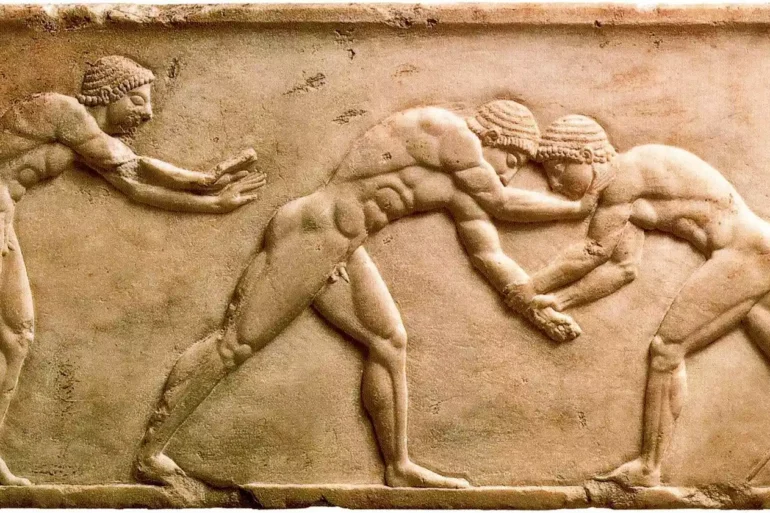The black-figure amphora depicting Achilles and Penthesilea by Exekias is one of the most important examples of Archaic vase painting. This exceptional work, dating approximately to 540-530 BC, is currently housed in the British Museum in London. It is an amphora with a height of 41 centimeters, depicting the dramatic moment of the duel between Achilles and the queen of the Amazons, Penthesilea. The technical perfection and detailed rendering of the figures demonstrate the exceptional craftsmanship of Exekias, one of [...]
Discover the rare fresco of the Angel of the Second Coming in the Metropolis of Mystras.
The Archangel and Saint George are the central theme of an exceptional 17th-century Byzantine diptych kept at the Holy Monastery of Saint Paul on Mount Athos. The work, crafted with egg tempera and gold leaf on wood, represents the pinnacle of Byzantine iconographic art. The vertical composition is divided into two distinct levels: the upper section is dominated by the figure of the Archangel with imposing wings, while the lower part depicts Saint George in military attire. The technique combines traditional Byzantine [...]
The mural "Christ Praising the Widow's Mite" at the Monastery of Chilandar is an exceptional example of Palaiologan art.
Mural where Christ rebukes the wind and the sea at the Monastery of Philanthropenon (16th century).
The influence of the East on ancient oil containers transformed Greek pottery, introducing realistic and symbolic motifs.
Title: The Dormition of the Virgin Artist: Doménikos Theotokópoulos Type: Portable icon Date: Before 1567 Dimensions: 61.4 x 45 cm Materials: Egg tempera and gold on wood Location: Metropolitan Church of the Dormition of the Virgin, Ermoupoli, Syros
The Dormition of the Virgin by Theotokópoulos (El Greco) is one of the most important early works of the artist during his Cretan period. The work was created before his departure for Venice in 1567 and reflects his excellent training in the Cretan painting tradition. The [...]
Early Christian Art was born out of the fusion of pagan and Christian symbols and themes. The Emperor Constantine played...
The Enthroned Virgin Mary "Lady of the Angels" of Corfu is an exceptional example of post-Byzantine art from the early 16th century.
Title: Saints Alexios, John the Hut-Dweller, an unidentified saint, and John of Damascus Artist: Unknown Type: Fresco Date: Early 15th century Dimensions: Unknown Materials: Fresco on plaster Location: Holy Monastery of Valsamonero, Church of Panagia Odigitria, Crete
The exceptionally crafted fresco of Saint John of Damascus is one of the most significant examples of Cretan iconographic art from the early 15th century. The work is located in the Church of Panagia Odigitria of the Valsamonero Monastery, a monastic complex that flourished during the period of Venetian rule [...]
Title: Saint Stephen the Protomartyr Artist: Unknown Type: Fresco Date: Early 15th century Dimensions: Unknown Materials: Fresco on plaster Location: Holy Monastery of Valsamonero, Church of Panagia Odigitria, Crete
The fresco of Saint Stephen is an exceptional example of Byzantine iconography from the early 15th century, adorning the walls of the historic Monastery of Valsamonero in Crete. The work depicts Saint Stephen, the first martyr of the Christian faith, in a monumental and imposing stance. The style of the fresco reflects the artistic [...]
The funerary steles in ancient Athens were an important means of expression and remembrance for the dead during the classical period (5th-4th century BC). These carved monuments, often decorated with relief depictions and inscriptions, offered a glimpse into the social, cultural, and artistic life of the era. Through the evolution of their design and iconography, the funerary steles reflect the changing perceptions of death, family, and identity in ancient Athens. In the heart of ancient Athens, among [...]

